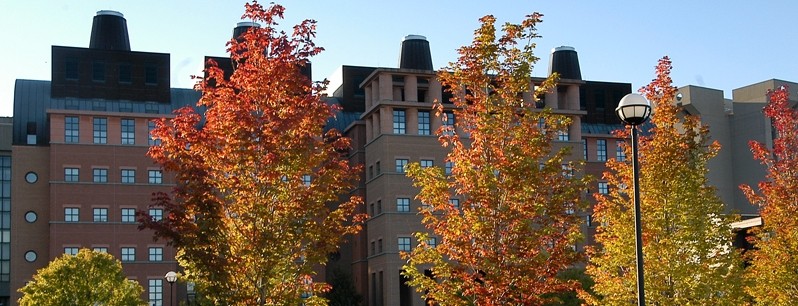
Researcher aims to replicate elastin in tissue engineering
Stacey Schutte brings her diverse background to biomedical engineering
Stacey Schutte is studying how elastin is uniquely produced in the body of pregnant women – and she hopes to use the knowledge in tissue engineering and regeneration. Schutte, Ph.D., joined the University of Cincinnati College of Engineering and Applied Science in August 2019 as a biomedical engineering assistant professor.
“My goal is to be able to come up with a way that we can get any cell type that would normally produce elastin to produce it for tissue engineering applications,” Schutte said.
Elastin is the elastic component of connective tissue that enables contraction and expansion. It’s found in the skin but is also a critical component for lung and blood vessel function. Learning to produce elastin could have potential applications in wound healing, emphysema patients, burns and cardiovascular problems, to name just a few.
Schutte is getting her new lab up and running and recently hired a UC student for an undergraduate co-op. Research will first focus on the interactions between hormones and mechanical forces in a variety of cell types, including uterine myometrial cells, to understand what is happening and how to replicate it. She hopes to take what they learn and apply it to tissue engineering, starting with skin.
Most adult cells do not produce enough elastin to repair damaged fibers or for use in tissue engineering, but there is a notable exception. During pregnancy, a woman’s uterus produces elastin in the third trimester to allow for the uterus to return (almost) to its normal shape after the baby is born. Post pregnancy, elastin levels return to that of a typical adult.
For Schutte, her educational and career path did not occur in a straight line, but she now looks back at each twist and turn along the way as part of the learning experience that has made her uniquely qualified for her role at UC.
After earning her bachelor’s degree in mechanical engineering, Schutte worked for five years as an engineer at Cummins on product development for fuel injector assembly and components, until she came to the realization that she doesn’t actually like engines. She opted to pivot from mechanical engineering to biomedical.
Schutte worked on vascular tissue engineering – an area of research that sparked her interest – while getting her Ph.D. in biomedical engineering at Georgia Institute of Technology, where she also completed her undergraduate degree. Later she conducted research as a postdoctoral fellow and instructor at Emory University School of Medicine in the gynecology and obstetrics department, which is where she studied the female reproductive system and first learned of the unique elastic properties of the uterus in pregnancy.
The importance of elastin came into focus in a new way – in the scarring and healing of skin – during Schutte’s next position. She spent three years working at Shriners Hospitals for Children – Cincinnati, a pediatric burn treatment center specializing in plastic and reconstructive surgery. While at Shriners, she was also a UC adjunct assistant professor.
“I think I’ve finally figured out how all these unique perspectives make me different,” Schutte said. “Now I have the right skills, the right set of ideas, the right people I’ve met along the way, to really do what is important to me. I’ve figured out what I’m passionate about.”
Featured photo at top: Engineering Research Center. Photo/UC Creative Services.
Related Stories
Engineering professors studying how co-op impacts student journey
January 5, 2026
Cedrick Kwuimy, associate professor educator in the Department of Engineering and Computing Education at the University of Cincinnati College of Engineering and Applied Science is studying how a student’s first co-op experience impacts the remainder of their journey as an engineering student, and how educators can better prepare them for these experiences. Kwuimy and his collaborators have received a three-year grant from the National Science Foundation (NSF) to support this research.
UC student breaks world record in competitive speedcubing
December 19, 2025
UC computer science student Sujan Feist set a new world record in speedcubing at competition this month in Coshocton, Ohio. Feist is the reigning world champion in the 2x2 division.
UC undergraduate collaborates with Swiss university on drone research
December 19, 2025
Prissha Chawla, undergraduate student at the university of Cincinnati, is double majoring in computer science and statistics at the College of Engineering and Applied Science and College of Arts and Sciences. Now preparing to graduate in the spring of 2026, Chawla’s journey at UC has been full of impactful experiences. Since she arrived, she has had the opportunity to participate in a new international exchange program with a university in Switzerland, present at an international conference in Prague, co-op with Delta Air Lines, and much more.
